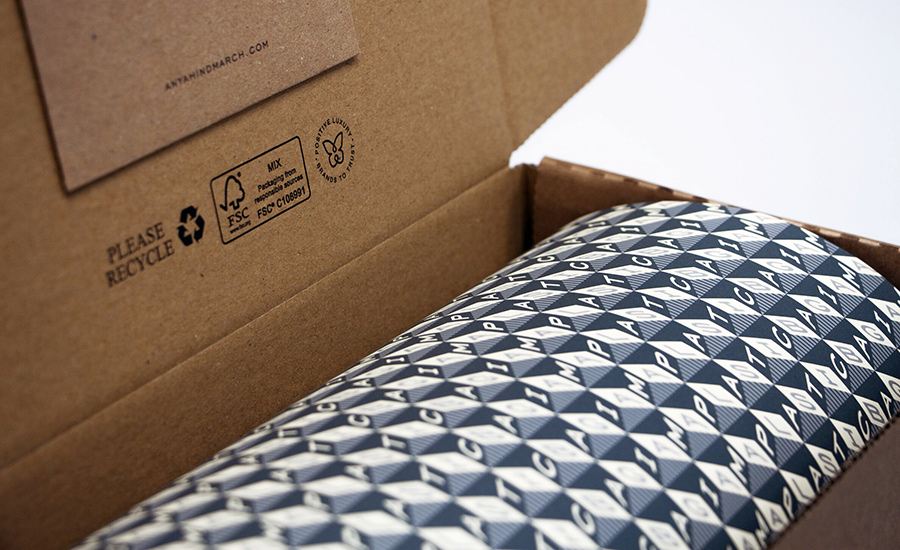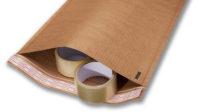Extended travel and competitive demand for goods across the globe has posed a significant risk to the potential for damage, lost profits and return of goods in the retail sector, particularly where perishables and delicate items such as glass and luxury goods are at play.
This is also posing threat to the sustainability of these items as with returns and breakages comes extra production and an additional carbon footprint.
The rapid and vast expansion of e-commerce presents new challenges in shipping and packaging. Once, consumers shopped online through choice, a year ago it was through necessity, and now it is a consumer habit that is unlikely to recede.
A closed street, travel restrictions and several lockdowns. Just one of these constraints would have driven consumers to e-commerce in record numbers. The near-simultaneous arrival of all three created retail uncertainty for a significant period and a brought forth a likely permanent consumer shift.
According to a Shopify global survey of eleven markets, 84% of consumers consistently shopped online in 2020. Given the conditions of retail this past year, this is hardy an earth-shattering revelation. What is interesting, however, is the breakdown of that percentage.

Courtesy of Delta Global
Those of us that have follow e-commerce forecasts are familiar with reading about older shoppers being reluctant to move online. This was a portal for Gen Z and Millennials, whose lives are lived in a perpetual online sate. The past year proved otherwise, with over 50s quickly and comprehensively embracing the new ecommerce reality.
We are now currently amid a climate where all demographics are accustomed with ecommerce shopping. It would seem highly unlikely that reliance on online shopping will be reversed, when consumer demand for speed and ease is higher than ever, with 70% of shoppers declaring rapidity and ease as their priorities.
The Packaging Journey
With the number of shipped products rising, more packages are travelling through cross-border logistics networks. As they pass though, the number of touchpoints increases, and the risk of damaging products and packaging significantly rises. On average, an e-commerce package is handled 20 times more frequently than shop-purchased goods.
Traditional retail does not pose such a risk. In that framework, a consumer product would travel from the manufacturer to the warehouse, then to the retailer and, finally, to the consumer. But the e-commerce process can add an indefinite amount of stops along the journey to the purchaser.
After the warehouse, a "fulfilment" process is added before products are sent to be stored and picked at local sortation centers. Then, delivery companies can handle the "last mile" of the journey in various ways, passing product and packaging to one delivery person and location to the next. Then we have the additional complication of returns, which double this elongated process in reverse.
A recent DHL survey revealed that around 50% of e-commerce customers would not likely purchase again from a retailer if a package arrived with damage. Brands that do not have a robust protective packaging solution are jeopardizing the opportunities that e-commerce presents them.
Sustainability and the Wow Factor
If you were to pick a retail report to study at random, there is a good chance that you would encounter the issue of sustainability. Consumers demand and expect — and will even pay more for — sustainable products. This is especially the case with packaging. I believe packaging should be produced to the highest sustainability standards. Here are just two reasons. The first is the ethical responsibility we have as a packaging producer, which is central to our business model. The second is: The market, consumer and government legislation across the globe are heading steadfastly in the direction of sustainability. To avoid sustainability is a commercial misstep akin to avoiding protective packaging.
Therefore, any protective packaging solution needs to incorporate sustainability. And, if e-commerce companies wish to fulfil consumer expectations, they must also think carefully about providing the “wow” factor in packaging design.
The rise of the unboxing video and the organic marketing opportunities that offers is not to be ignored. If your e-commerce platform isn’t creating packages with the unboxing experience in mind, your competitor likely is. A memorable unboxing experience can turn an e-commerce purchaser into an e-commerce customer.
Protective Packaging Challenge
Combining sustainability, an unboxing experience and protective packaging is a challenge that ecommerce retailers must meet. The market requires this to be achieved without reliance on traditional protective packaging, such as Kraft paper, air pillows and bubble wrap. They can leave heavy carbon footprints — and the presence of plastics defies the wants of the consumer. Eight in 10 consumers are actively reducing their plastic waste and purchases.
Generally, protective packaging does not perform well regarding performance and sustainability. Either the packaging concedes too much to unsustainable materials in pursuit of protection, or its sustainability credentials are robust but its protective elements are not.
And, according to DHL, more than 24% of e-commerce packaging is empty space. Consumer awareness of plastic pollution and excessive waste means the current model of packaging is neither environmentally nor commercially tenable.
The answer for e-commerce retailers and brands is to switch to packaging specialists who can manufacture sustainable, protective packaging, incorporating brand story and an unboxing experience that retains customers. To delay in doing so is to forfeit those customers to competitors that are doing packaging better.
And in an uncertain retail environmental, this could cost more than missing e-commerce growth. The price to pay may be the sustainability of the business itself.









